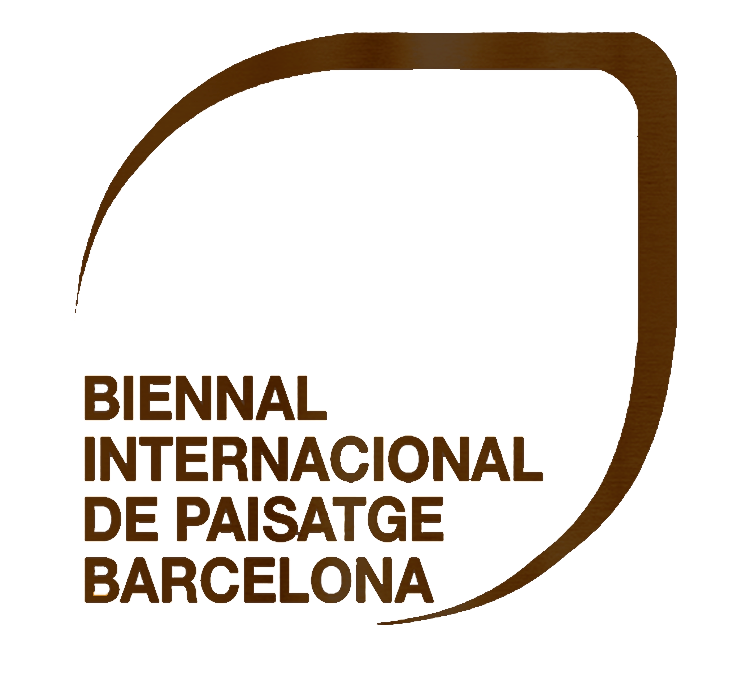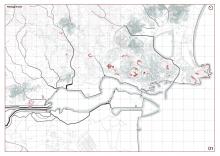
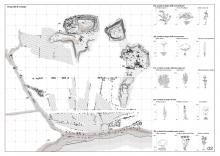
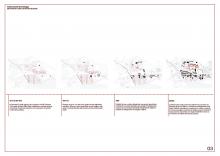
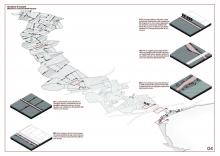

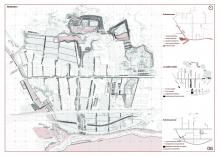
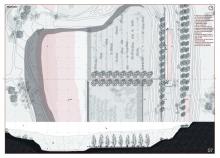
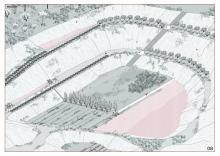
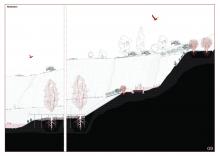
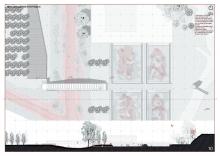
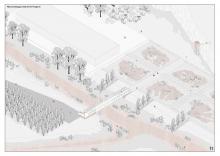

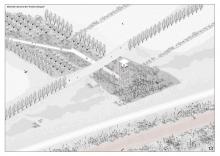
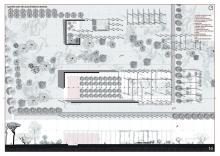
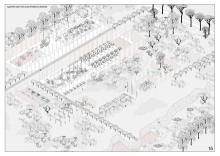
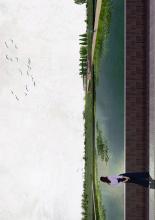
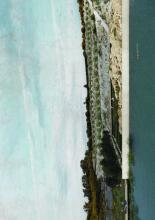
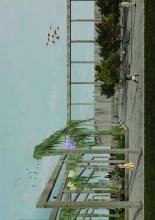
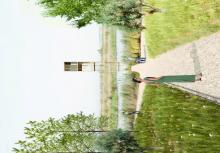
The Fangario Quarry, once an open-pit clay extraction site, is located in a transitional area between agricultural, industrial, and lagoon landscapes. This peri-urban zone has suffered from unregulated urban expansion, resulting in a degraded context marked by low-quality architecture scattered across abandoned farmland.
The site's human history is clearly legible, as the landscape has been radically transformed from its original agricultural state. The extraction process has created a porous system of quarries which, due to the nature of the substrate, often fill with rainwater. This constellation of pits is part of the Rio Fangario watershed, which flows into the Santa Gilla lagoon. While these wetland ecologies are often viewed as marginal or problematic, this thesis aims to reframe them as territorial structures capable of generating a new spatial and ecological order.
Today, the landscape appears fragmented, made up of disconnected compartments lacking mutual relationships. The design proposal seeks to overcome this isolation by exploring the potential interactions between the three water systems (ponds, stream, lagoon) through an intervention that not only brings clarity and identity to a formless context but also restores ecological balance. The project focuses on redefining the edges of these water bodies to create new connections. The voids left by fractal urban expansion become opportunities to enhance these marginal spaces, establishing a green network that links the various ecological systems and provides spatial continuity within a fragmented urban fabric.
